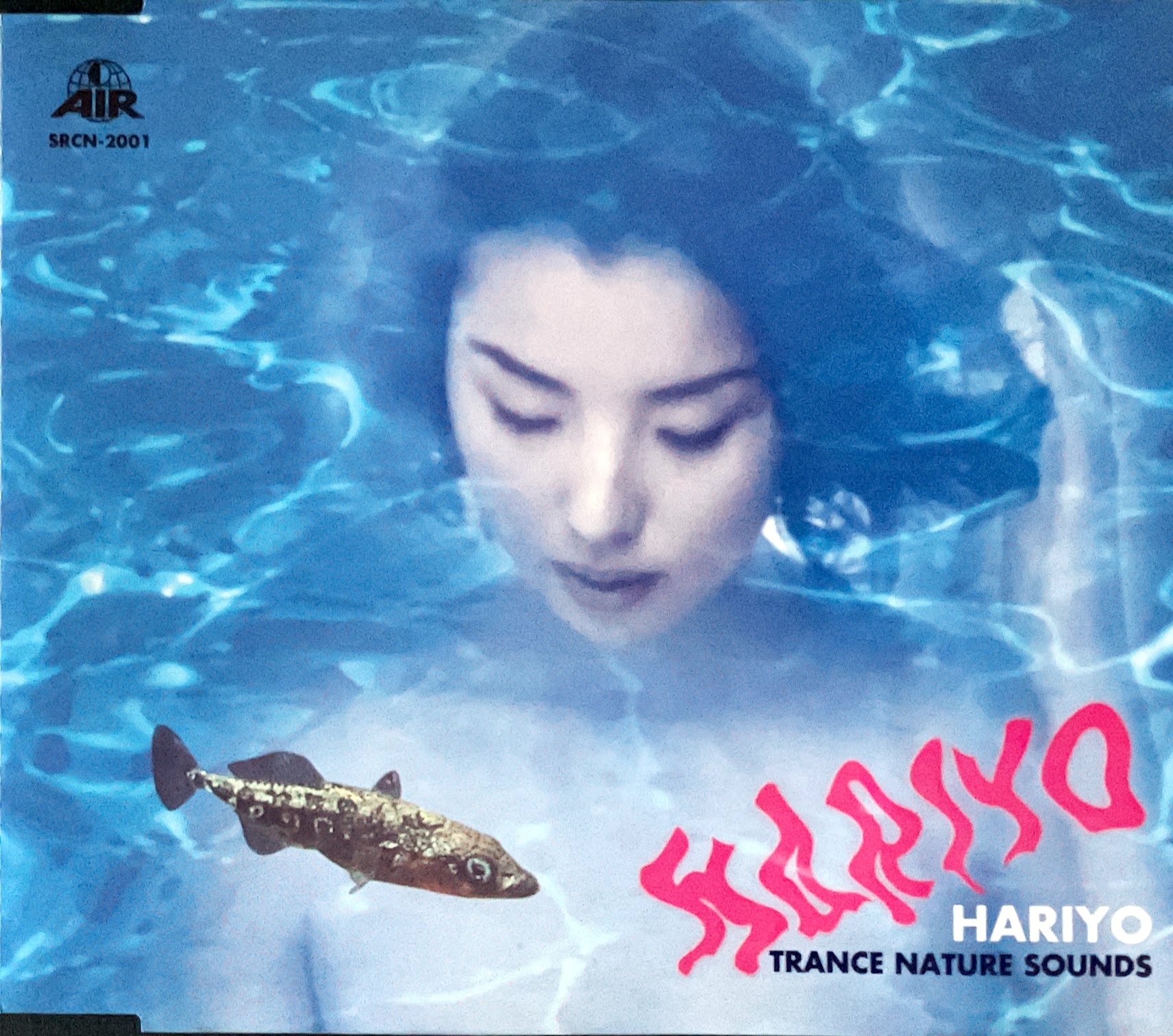Trance Nature Sounds. I feel like anything I say about Hariyo Remixe’s might not do justice to the music as clearly as what you see on its album cover.
Released in 1994, under The AIR Project for Studio Ryo, Hariyo Remixe’s was a self-pressed CD featuring 25 minutes of Walearic music that defied easy categorization. As I kept germinating a blog post about it and re-listening to it, I asked myself: Just what or who was behind it? Just what was the story behind this music? To the point that I debated whether I would ever think of sharing it as what turned up in my research led me into many empty rabbit holes. Yet, I persisted, someone must know something. As a truly leftfield summer record, someone else (other than myself) had to hear it.
So rather than beat around the bush, I got working. I found a website and sent out an email. Who knows? A shot in the dark is better than none taken whatsoever. Maybe I could reach someone after all these years and get some answers to a few questions.
Thankfully, it was one Ryoichi Katsuki, who would reply back and be kind enough to share the story behind Hariyo Remixe’s (over email). This is what he let me know:
My name is Ryoichi Katsuki, a Sound Designer. I also programmed and broadcast live on the satellite digital music channel St.GIGA for four years.
“HARIYO REMIXE’S” is a project that was featured in the Furukawa Electric Pavilion at the Mie Expo in Mie Prefecture, Japan. It is based on the fish “hariyo”, which lives in Azumino, and is a rearranged work from a visual sound piece titled Four Seasons of Spring Water in Japan, 30-minutes of cinematic music visual sound I composed. This work was further developed into a maxi-single and was showcased on J-WAVE, in aquariums, fashion scenes, and more.
My genre of Original Sound includes healing, lounge, New Age, ambient house, acid jazz, “Fashion Event Sound”, V.G.M., Planetarium, Aquarium, Amusement, C.F. Tune, C.I. Theme & Campaign Song, Picture Book (for picture books and photo collections), DVD Mook, Radio Anime, etc. I also do artist collaborations and cover arrangements. (All of these are synthesized.)
So far, including Remix versions played live, I have about 200 songs.
Unfortunately, my website is still incomplete, so I haven’t been able to showcase most of my works.
I plan to register about 100 representative tracks with TuneCore for online distribution, and I am currently handling the copyright permissions with broadcast stations, sponsors, etc.
– Ryoichi Katsuki
Ryoichi would add that he was too busy to talk further at that moment but was open to explain more in the future.

If you can imagine, as glad as I was to hear from him, just as soon as I was able to establish contact with Ryoichi, follow up emails bounced back and Ryoichi became unreachable. Be that as it may, what turned out to be an object lesson in keeping one’s eye on one’s own inbox space, also led me to dig a bit deeper: into Ryoichi’s bio.
If you venture to his wonderfully retro site, you’d see that in 1983, at the age of 33, Ryoichi struck out as an independent musician and producer contributing myriad music to fashion shows, corporate videos, and devising his own environmental music. It’s no wonder he’d be part of St.GIGA’s groundbreaking tide table-based programming. His whole body of work (from CMs to sound installations) appear to reflect a deep-rooted fascination with the elements of escape and dreams, all central themes in his “artistic” vision. In the end, Ryoichi’s musical philosophy seemed to try a unique blend of visual-sound ambience with an eye towards fashion.
Hariyo, Ryoichi’s band, we’re left to surmise was aided by St. GIGA. Looking at the liner notes, one can see that Hariyo Remixe’s recording session was held at St. GIGA’s Tokyo studio. And Mika Nara, the model you see gracing the cover was also the singer on this record. Photographed and recorded by Ryoichi, it’s her visage that gives face to the music. In that small nook of music, musicians were trying to find space to create this kind of aesthetic and Ryoichi’s total vision — sound, image, and album — felt of a little-known bigger piece.
So, as you hear the aquatic house of opener “Swimming Mix” transform into the lounge of “Urban Mix” and that takes a techno turn into the “International Mix” and ends on the environmental music of “Ambient Mix”, ask yourself: please tell me there is more of this out there?
…for now, sadly, this appears to be my only answer, until I hear more.
FIND/DOWNLOAD

2 responses
This is great, thanks!
Did you mean to embed the same video twice?
Nice catch! I’ve embedded the correct second video now.